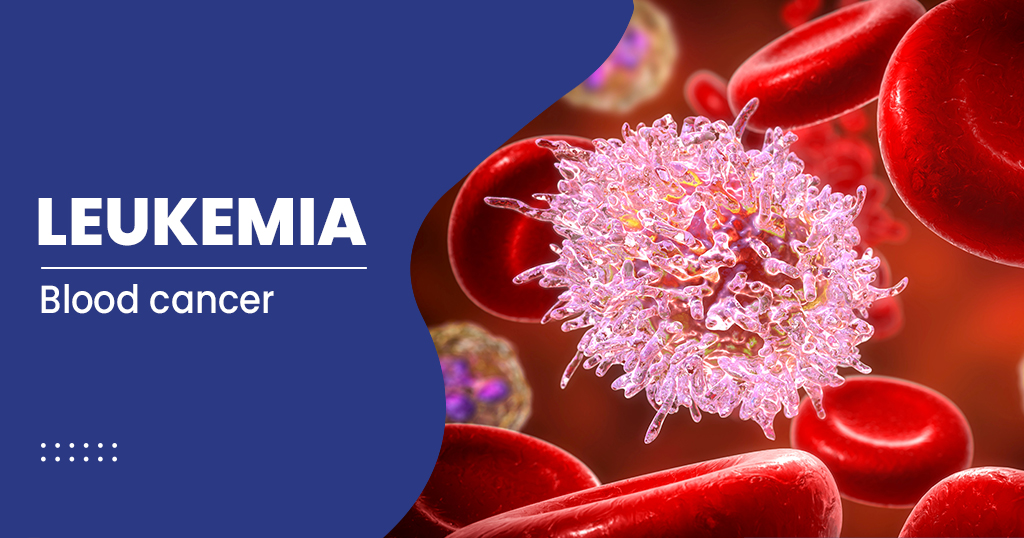Leukemia Symptoms – Since its first discovery, cancer has become one of the biggest headaches for health experts around the world. One of the major problems with cancer is that healthcare experts are yet to find the right causes of cancer.
We just know that when tissues from any organ start growing rapidly without need, it is called cancer. It can happen in any organ and add blood to the body. Yes, blood cancer is a real thing, and it is among the most severe types of cancer.
Health experts around the world also refer to blood cancer as leukemia. There are different kinds of leukemia in the world, and some kinds are much more common in kids as compared to adults.
If you are also wondering about different types of leukemia and leukemia symptoms, then you are at the right place. We are going to discuss everything in depth to help you enhance your knowledge.
What is Leukemia?
Leukemia is a general term to define different types of blood cancers. There are different kinds of leukemia which depend on the type of blood cell and its growth.
Leukemia is a unique condition that usually occurs in adults above the age of 55. At the same time, leukemia is also the most common type of cancer in children below the age of 15.
Most of the time, leukemia affects white blood cells. These white blood cells are very important for the overall healing and infection-fighting abilities of our body.
During the condition, the body of the affected person will start developing an excessive amount of abnormal white cells that do not function properly.
Types of Leukemia
There are different types of leukemia, and they all can have little bit different symptoms. The American Cancer Society believes that despite the different types, most people diagnosed with the condition are going to experience somewhat similar symptoms.
- One of the most common types of leukemia is acute lymphocytic leukemia, also known as ALL. This type of leukemia is more common in youngsters as compared to adults.
- Acute myelogenous leukemia is the second most common type of cancer. Most adults diagnosed with leukemia are going to have a similar type of.
- Chronic lymphocytic leukemia is the most common chronic adult leukemia. It is also among the dangerous types as most people won’t experience any symptoms until it has reached stage 2 or 3.
- Chronic myelogenous Leukemia is the 4th type which mainly affects adults. Similar to other types of chronic leukemia, it might also not show any signs or symptoms until cancer has already reached the stage where it is going to grow more quickly than ever before.
Apart from the above given four types, there are also rare types of leukemia in the world, including hairy cell leukemia. The American Cancer Society believes that there are not many cases of this type of leukemia in the United States.

Causes of Leukemia
Similar to other types of cancers, healthcare experts are yet to figure out the right causes of leukemia as well.
Till now, healthcare experts around the world believe that there is a combination of different factors, including environmental and genetic, that can cause leukemia in a healthy person.
Similar to any other cancer, when the body starts producing unnecessary blood cells, it can get converted into cancer. Our body requires new blood cells, but it fixedly requires them so that it won’t turn anything into Cancer.
General Symptoms of Leukemia
Similar to any other type of cancer, leukemia is also known to have a long list of symptoms associated with the condition, and the affected person is going to experience them depending on their previous medical history and other factors.
Apart from that, you should also learn about the types of leukemia in the above-given sections to completely understand the common signs and symptoms of the condition.
The American Cancer Society believes that most people who have been diagnosed with leukemia have experienced below given symptoms.
- Excessive fatigue
- Fever
- Night sweats
- Shortness of breath
- Pale skin
- Joint pain
- Unexplained weight loss
- pain in the ribs
- Swollen lymph nodes
- Enlarged liver
- Easy bruising
- Nose bleed
- Bleeding gums
These are among the most common symptoms associated with the condition. One of the major things you should learn about the symptoms of leukemia is that some types of leukemia might not cause any signs or symptoms until they have already reached stage 3 or 4.
Stages of Leukemia
There are different stages of leukemia, similar to any other cancer. Health experts around the world also believe that different stages of the condition can cause different types of symptoms.
If you’ve never been diagnosed with leukemia, then you should not self-diagnose yourself according to the stages and symptoms. Many of the below-given symptoms are also associated with several other diseases.
- State o of leukemia is not going to cause any physical symptoms of the condition. A patient will have high levels of white blood cells during the condition, but there won’t be any physical science at all.
- Stage one leukemia is going to have high white blood cells, and at this stage, the person might also experience enlarged lymph nodes and any other symptoms of the condition.
- Stage 2 of leukemia is known to cause enlarged lymph nodes along with some other symptoms of the condition. At this stage, the Patient might also experience anemia.
- The 3rd stage of leukemia is a serious situation where the patient will experience several symptoms associated with the condition, including high white blood cells, anemia, enlarged lymph nodes, and enlarged liver.
- The 4th and final stage of leukemia is going to have a huge number of symptoms where the patient can experience most of the common or general symptoms of the condition.
As you can see in the different stages of the condition, the symptoms of leukemia are going to be similar, where the patient will experience higher levels of white blood cells.
People at Higher Risk of Developing Leukemia
Before we move ahead, let’s take a quick look at the categories of people who are at high risk of developing leukemia. If you also fall in any of the below-given categories, we highly recommend you consult with your healthcare provider.
- The American Cancer Society believes that people who have a cancer history are much more vulnerable to developing leukemia.
- People with a smoking history or exposure to secondhand smoke are also vulnerable to developing acute leukemia.
- Exposure to several industrial chemicals is also known to cause leukemia. People who work in plastics, dyes, rubbers, pesticides, and detergents are much more vulnerable to exposure and development of the condition.
- A family history of leukemia can also raise the chances of the condition. People who already have a family history should consult the probability with their healthcare provider as early as possible.
The American Cancer Society suggests everyone who falls in the above-given categories consult the probability of leukemia with their healthcare provider as early as possible. These are not the only categories of people who are much more vulnerable to developing leukemia.
There can be some people who might not fall into any of the above categories, but they have been diagnosed with leukemia. For more information on the condition and the high-risk categories, we highly recommend you consult with your healthcare provider.
Diagnosis of Leukemia
Diagnosis of leukemia or any other cancer is a very critical part as most people might not experience any symptoms until the cancer has already reached the second or 3rd stage.
First of all, your healthcare expert is going to take a look at different symptoms associated with the condition for the diagnosis. As you might already be aware, leukemia is known to cause swollen lymph nodes and enlarged liver.
If your health care expert detects any irregularities, including bleeding and swelling of gums, then your health care expert might suggest you go for several other tests.
Secondly, a complete blood count test is among the most important tests to find any abnormal levels of red blood cells or white blood cells. As you might already be aware, leukemia is known to cause a sharp rise in the levels of white blood cells.
Thirdly, healthcare experts might also suggest you go for a bone marrow biopsy and several imaging tests, including an X-ray, CT scan, and MRI scan.
You should not self-diagnose yourself for leukemia under any circumstances. You should always visit your healthcare provider for any doubts.
What are the treatment options for leukemia?
Similar to other types of cancers, the former treatment of leukemia also depends on the type of leukemia you have, along with your age and overall health. Your healthcare provider might suggest you go for targeted therapy, chemotherapy, or immunotherapy for the treatment of leukemia.
